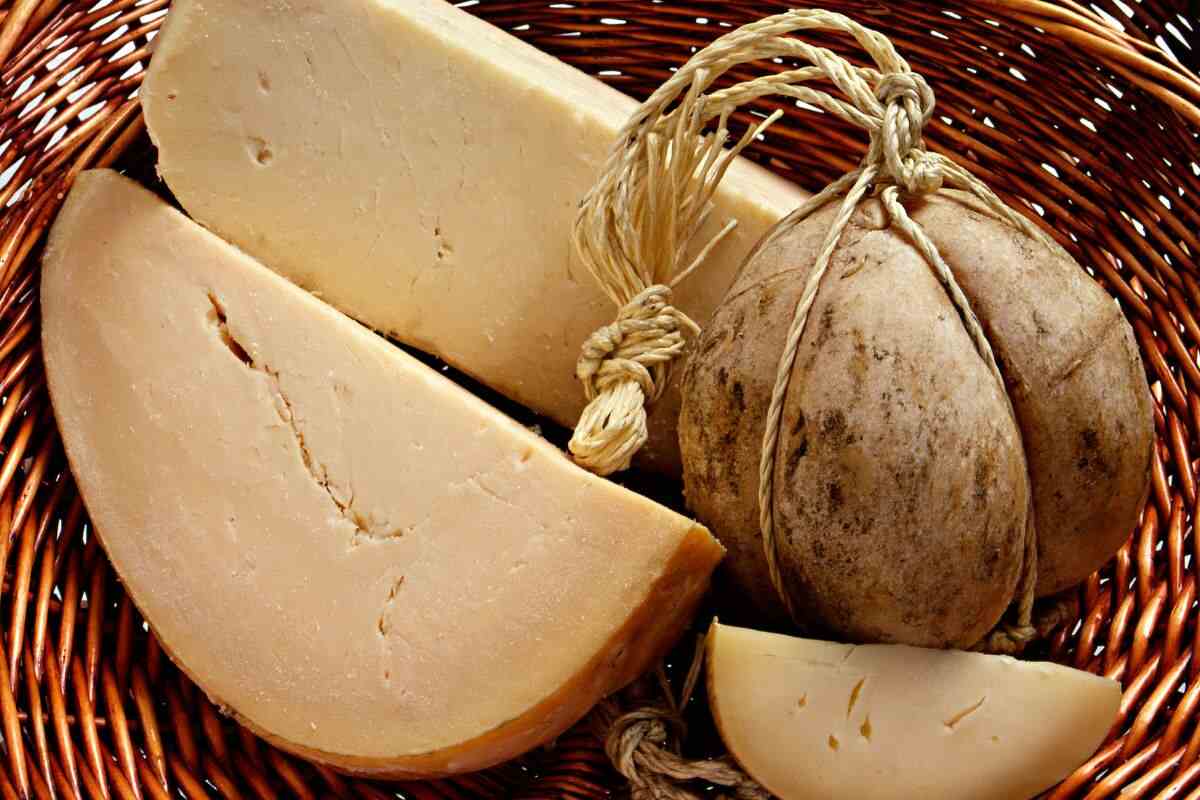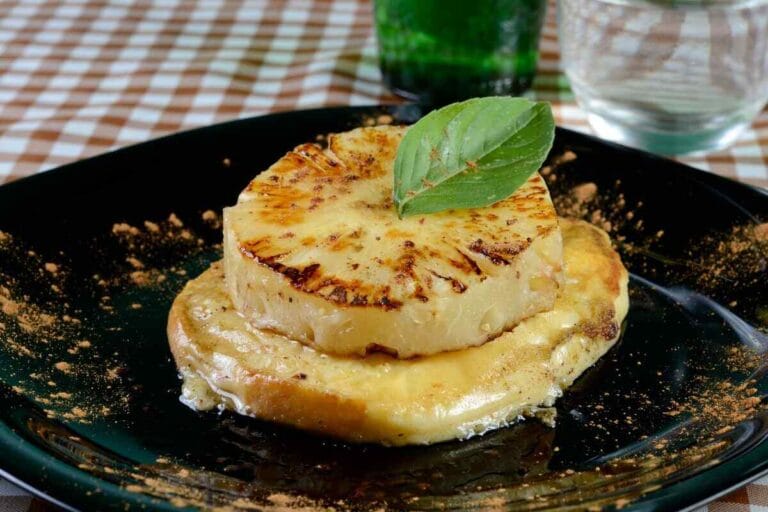What Is Provolone Cheese?
Provolone cheese is one of the shining stars of the Italian dairy world. Known for its semi-hard texture and distinctive flavor, this cheese is as versatile as it is delicious. Provolone can be mild and creamy or sharp and tangy, making it a favorite for everything from sandwiches to gourmet cooking.
Table of Contents
A Brief History of Provolone Cheese
Provolone’s roots trace back to southern Italy, where it was crafted in small farms and villages. Its name comes from the Italian word “provola,” meaning “globe,” which reflects the cheese’s traditional round shape. Over time, the methods spread across Italy and beyond, adapting to modern tastes and techniques while retaining its artisanal charm.
Types of Provolone Cheese: Mild vs. Aged
Did you know there are two main types of Provolone cheese? Each has its own distinct personality, making it a versatile choice for a wide range of dishes. Let’s break it down:
Provolone Dolce (Mild):
This is the creamier, gentler sibling of the two. Aged for just 2-3 months, Provolone Dolce has a smooth, buttery flavor that’s easy to love. It’s perfect for anyone who enjoys subtle, delicate tastes. Think of it as the cheese equivalent of a warm hug—it’s comforting and not too overpowering. This variety pairs beautifully with fresh fruits, crackers, or a light white wine.
Provolone Piccante (Aged):
If Provolone Dolce is the gentle one, Provolone Piccante is the bold adventurer. Aged for over four months, sometimes even up to a year, this cheese develops a sharper, more robust flavor. Its taste is rich, complex, and slightly spicy, with hints of nuttiness. Provolone Piccante is ideal for those who love bold cheeses that pack a punch. Pair it with cured meats, olives, and a hearty red wine for a truly indulgent experience.
Both types are delightful in their own way, but they shine in different culinary contexts. Whether you’re looking for something mild and mellow or bold and tangy, Provolone has you covered!
How Is Provolone Cheese Made?
Provolone cheese isn’t just delicious—it’s a work of art. Its production combines traditional Italian cheesemaking methods with a little bit of modern magic. Here’s how it all comes together in a way that’s both fascinating and easy to understand.
Step 1: Start with the Milk
It all begins with fresh cow’s milk, the foundation of Provolone’s rich and creamy texture. The milk is gently heated to a specific temperature to prepare it for the next step.
Step 2: Add the Rennet
Rennet, a natural enzyme, is added to the milk. This helps the milk curdle, forming solid curds and liquid whey. It’s like turning milk into a soft jelly—cool, right?
Step 3: Cut and Heat the Curds
The curds are cut into small pieces and heated to help release more whey. This step gives the cheese its signature firmness and texture.
Step 4: Stretch and Shape
Here’s where Provolone gets its personality. The curds are kneaded and stretched until they’re smooth and elastic, almost like dough. This process is what gives Provolone its characteristic stretchy texture. Then, the cheese is shaped into its traditional forms, like a globe or sausage.
Step 5: Salt and Age
The cheese is salted to enhance its flavor and preserve it. Finally, it’s hung in special rooms to age. How long it’s aged determines whether it becomes a mild Provolone Dolce or a bold Provolone Piccante.
“Think of making Provolone like crafting a masterpiece—each step adds layers of flavor and texture.”
Whether traditional or modern techniques are used, the goal remains the same: creating a cheese that’s as flavorful as it is versatile.nnovation.
The Ingredients Behind Provolone Cheese
Provolone is made from cow’s milk, rennet, and a handful of natural cultures. The simplicity of the ingredients ensures that the cheese’s flavor shines through.
| Ingredient | Quantity |
|---|---|
| Cow’s Milk | 10 liters (for 1 kg of cheese) |
| Rennet | As required |
| Salt | A pinch |

The Step-by-Step Production Process
- Milk Heating: Fresh cow’s milk is heated to a specific temperature to begin coagulation.
- Curd Formation: Rennet is added, which helps form the curds that are cut into small pieces.
- Stretching: The curds are stretched into a pliable consistency, giving Provolone its characteristic texture.
- Shaping: The cheese is molded into its signature globe or sausage shape.
- Aging: Depending on the desired flavor, the cheese is aged anywhere from a few weeks to several months.
Traditional vs. Modern Production Techniques
While traditional methods involve hands-on processes and wooden aging racks, modern production utilizes advanced tools to meet growing demand. However, both methods aim to preserve the authentic taste that makes Provolone special.
What Makes Provolone Cheese Unique?
Have you ever wondered what sets Provolone apart from other cheeses? Its uniqueness lies in its flavor, texture, and adaptability.
The Distinct Flavor Profile of Provolone
Provolone’s taste evolves with age. Young Provolone offers a mild, creamy taste that pairs well with lighter dishes, while aged Provolone delivers a bold punch perfect for robust recipes.
“Aged Provolone Piccante is like a good wine—it gets better and more complex over time.” 🍷🧀
The Role of Aging in Provolone’s Taste
Aging plays a critical role in enhancing the cheese’s texture and flavor. Younger varieties are softer, while longer aging results in a firmer, more crumbly texture with intensified flavors.
How to Use Provolone Cheese in Cooking
When it comes to versatility, Provolone cheese is second to none. Whether you’re a seasoned chef or a home cook, it’s a must-have ingredient.
Recipes Featuring Provolone Cheese
Here are some mouth-watering dishes to try with Provolone:
- Cheesy Chicken Casserole: Provolone adds a creamy layer that ties all the flavors together. 🥘
(Get the full recipe: Cheesy Chicken Casserole Recipe) - Provolone-Stuffed Meatballs: A delightful surprise awaits inside these Italian-style meatballs.
- Grilled Cheese Sandwiches: Swap out your regular cheese for Provolone for an elevated experience.
The Best Pairings for Provolone Cheese
Provolone pairs beautifully with a variety of foods and drinks. For mild Provolone, pair with fresh fruits and white wine. Aged Provolone shines when paired with cured meats, olives, and red wine.
| Pairing | Recommendation |
|---|---|
| Mild Provolone | White wine, pears, almonds |
| Aged Provolone | Red wine, salami, olives |
Melting Provolone: Tips and Tricks
Looking to achieve that perfect, gooey melt? Use Provolone in your favorite casseroles, lasagna, or pizzas. A lower melting point makes it ideal for achieving a creamy consistency in sauces and toppings.
Fun Facts About Provolone Cheese
Did you know? Provolone is not just a cheese; it’s a cultural icon in Italy. From street vendors in Naples to elegant dining in Milan, Provolone finds its way into every corner of Italian cuisine.
- Provolone is often smoked, giving it an added depth of flavor.
- Some Provolone wheels are over three feet in diameter and weigh more than 200 pounds! 😲
- In Italy, Provolone is often served as part of a cheese platter with honey and figs.
Common Problems with Provolone Cheese
Even though Provolone cheese is a culinary delight, it’s not without its challenges. Let’s explore some common issues and how to solve them.
How to Store Provolone Cheese Properly
Proper storage is crucial for maintaining the taste and texture of Provolone. Always wrap the cheese in wax paper or parchment paper before placing it in an airtight container. Store it in the refrigerator’s cheese or vegetable drawer, where the temperature and humidity are optimal.
Pro Tip: Avoid plastic wrap as it traps moisture, leading to mold growth. ❄️🧀
Preventing Mold and Spoilage
Worried about mold? Provolone, like most cheeses, is susceptible to spoilage if not stored correctly. If you spot mold, cut off at least an inch around the affected area to salvage the rest.
Dealing with Provolone That’s Too Hard
If your Provolone has turned into a rock-solid block, don’t toss it! Instead:
- Grate it to use as a topping for soups or pasta.
- Soften it by wrapping it in a damp cloth and refrigerating it for a few hours.
The Nutritional Benefits of Provolone Cheese
Provolone cheese isn’t just delicious—it also offers a variety of nutrients. While it’s best enjoyed in moderation, it provides essential vitamins and minerals.
Vitamins and Minerals in Provolone
Here’s a breakdown of Provolone’s nutritional profile per 1-ounce serving:
| Nutrient | Amount | Daily Value (%DV) |
|---|---|---|
| Calories | 98 | 5% |
| Protein | 7 g | 14% |
| Calcium | 200 mg | 15% |
| Vitamin B12 | 0.5 mcg | 20% |
| Fat | 8 g | 10% |
Provolone also contains phosphorus, selenium, and zinc, all vital for overall health.
Is Provolone Cheese Healthy?
While Provolone is high in fat, it’s also packed with protein and calcium, making it a great choice for strengthening bones and muscles. Pair it with whole-grain crackers or fruits for a balanced snack.
Buying Provolone Cheese: What to Look For
Shopping for the perfect Provolone? Here’s what to keep in mind:
Choosing the Best Quality Provolone
- Color: High-quality Provolone is pale yellow, with no discoloration or dark spots.
- Smell: A fresh, slightly tangy aroma indicates freshness.
- Texture: It should feel firm yet pliable, not overly dry or crumbly.
Where to Find Authentic Provolone Cheese
You can find Provolone at gourmet stores, Italian markets, or online retailers specializing in authentic Italian products. Look for DOP (Protected Designation of Origin) labels to ensure authenticity.
FAQs About Provolone Cheese
What Are the Different Types of Provolone Cheese?
The two main types of Provolone are Dolce (mild) and Piccante (aged). Dolce is creamy and sweet, while Piccante has a sharper, tangier taste due to its longer aging process.
Can You Freeze Provolone Cheese?
Yes, you can freeze Provolone cheese, but it may alter the texture. Wrap it tightly in plastic wrap or foil, then place it in an airtight bag. Use frozen Provolone within three months for the best quality.
How Long Does Provolone Cheese Last?
When stored properly, mild Provolone lasts about 2-3 weeks in the fridge, while aged varieties can last several months. Always check for signs of spoilage, like mold or an off smell.
What’s the Best Way to Melt Provolone?
For the best melt, use grated or sliced Provolone at room temperature. It’s perfect for pizzas, sandwiches, and casseroles due to its smooth melting properties.
How Can I Tell If Provolone Cheese Has Gone Bad?
If the cheese has a sour smell, excessive mold, or an unpleasant taste, it’s time to discard it.
Can Provolone Cheese Be Used in Non-Italian Dishes?
Absolutely! Provolone’s versatility makes it a great addition to burgers, Mexican quesadillas, or even as a topping for baked potatoes. Try using it creatively in fusion recipes.
Conclusion: Why Provolone Cheese Deserves a Place in Your Kitchen
Provolone cheese is more than just a dairy product—it’s a culinary experience. With its rich history, diverse flavors, and incredible versatility, Provolone has earned its spot as a kitchen staple. Whether you’re cooking up a storm, indulging in a cheese platter, or simply enjoying it with a glass of wine, Provolone always delivers. So, the next time you’re at the grocery store, grab a wheel of this Italian gem and let your culinary imagination run wild!
Would you like to explore other cheese-related topics or need suggestions for recipes using Provolone? Let me know! 😊

